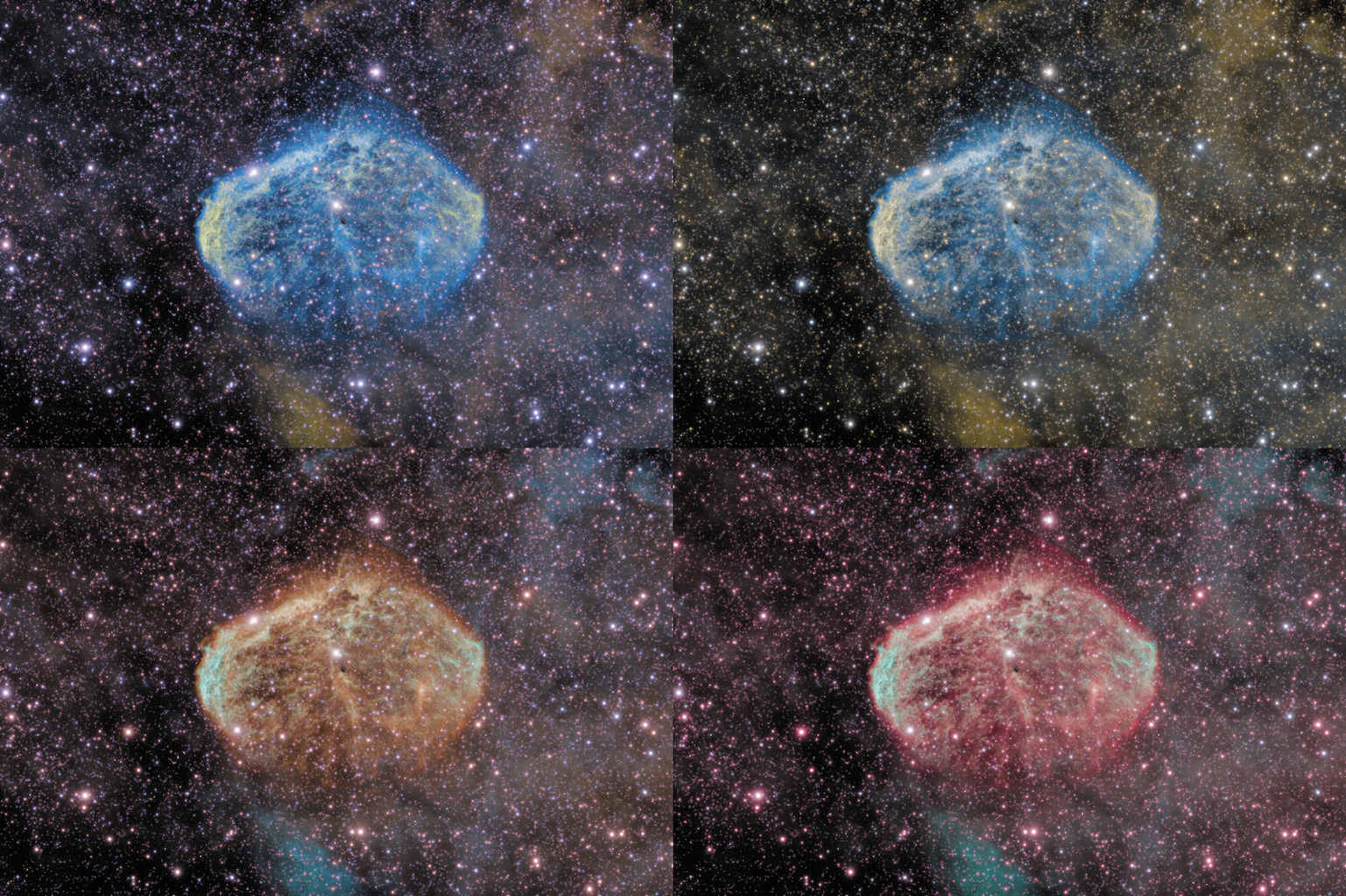- Usage
- Matrix correction and remapping
Matrix correction and on-the-fly channel remapping

The Color module comes with a vast number of camera color correction matrices for various DSLR manufacturers (Canon, Nikon, Sony, Olympus, Pentax and more), as well as a vast number of channel blend remappings (aka "tone mapping") for narrowband dataset (e.g. HST/SHO or bi-color duoband/quadband filter data).
Uniquely, thanks to the signal evolution Tracking engine, color calibration is preferably performed towards the end of your processing workflow. This allows you to switch color rendering at the very last moment at the click of a button without having to re-composite and re-process, while also allowing you to use cleaner, non-whitebalanced, non-matrix corrected data for your luminance component, aiding signal fidelity.
Camera Matrix correction is performed towards the end of your processing workflow on your chrominance data only, rather than in the RAW converter during stacking. This helps improve luminance (detail) signal, by not contaminating it with cross-channel camera-space RGB and XYZ-space manipulations.
The matrix or channel blend/mapping is selected using the 'Matrix' parameter. Please note that the available options under this parameter are dependent on the type of dataset you imported. Please use the Compose module to import any narrowband data separately.
You may also be interested in...
- Unrivalled post-processing fidelity with real detail
Post-processing is where astrophotographers make their hard-won data really count.
- Usage (under Color)
This ability further allows you to remap colour channels (aka "tone mapping") for narrowband data, without having to start over with your detail processing.
- Operating the Wipe module (under Usage)
The Wipe module is able to detect horizontal or vertical banding and correct for this.
- HDR: Automated Local Dynamic Range Optimization (under Features & Documentation)
The HDR (High Dynamic Range) module optimises local dynamic range, recovering small to medium detail from your image.
- Evaluating the result (under Usage)
The magnitude of the noise grain is subsequently recovered, modeled and shaped for use as quantization error diffusion in the final denoised image.
